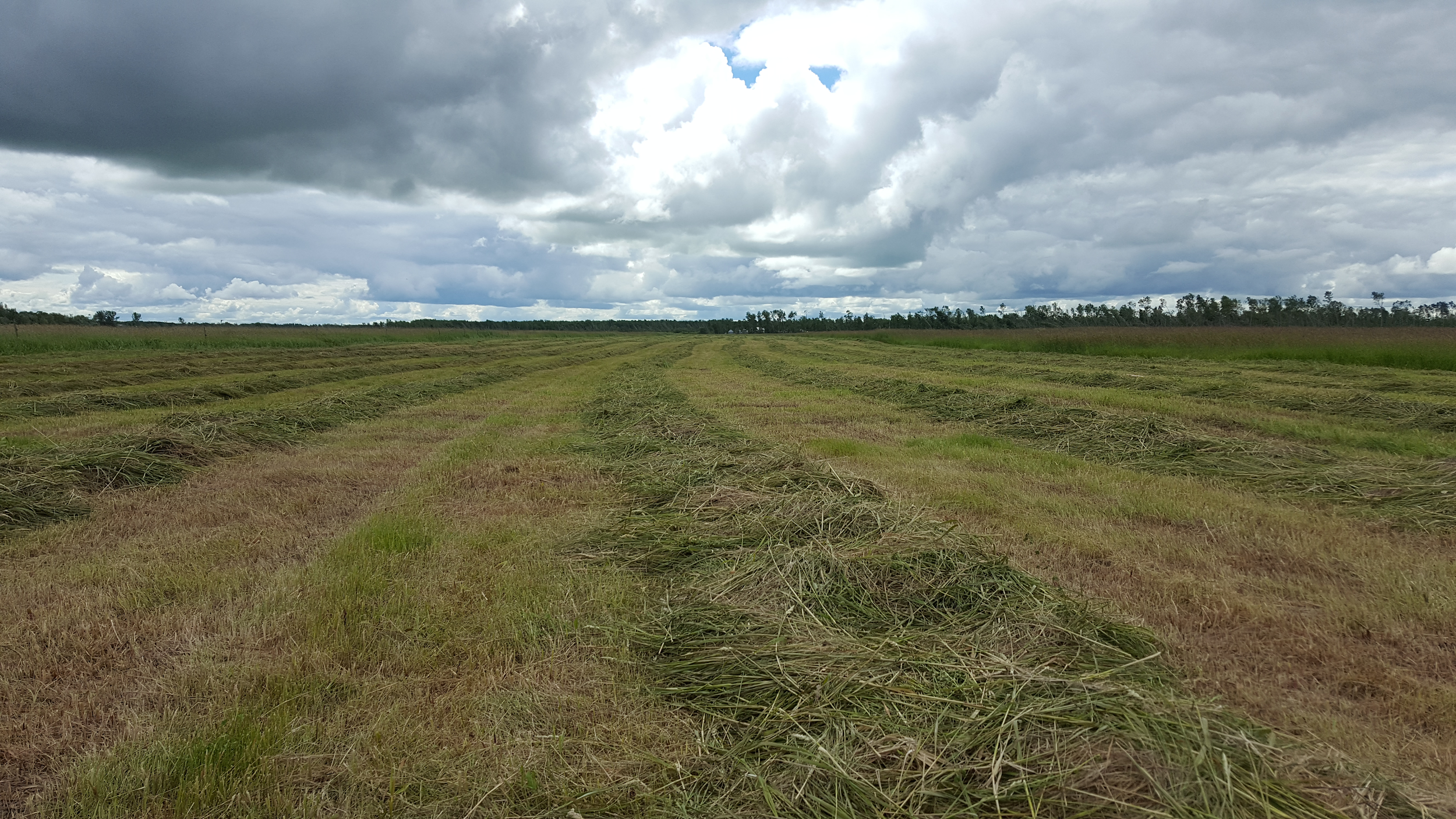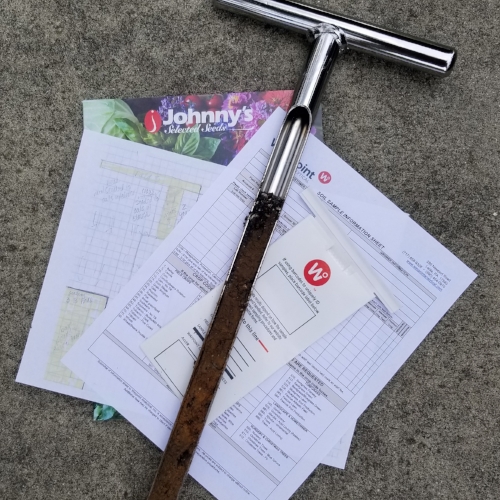Meet the Next Generation of Agronomists
I’m taking the next couple weeks off from writing.
1. I’m not 20 anymore and pulled my hamstring acting like I was. Does it affect my writing? No. Was I hoping it might make my writing better? Yes. What it does mean is that sitting at my desk any more than I have to has become painful and I need to face the fact that if I don’t take care of it now, it will only get worse. I’m referring to my hamstring. The writing, that’s a constant work in progress.
2. I have taken on more clients and need time to focus on that aspect of my business as well. Writing can sometimes get in the way.
3. I have always felt there is a bigger picture of what I’m doing and one of the ways I know how to achieve that is to include other people’s perspectives and ideas.
4. Last but not least, our daughter starts high school this year. In two weeks, I have to be more prepared for ninth grade than she does. I’m the teacher. I haven’t even gone up to the attic to find all the books I need let alone gotten a schedule ready for her. I need a couple of weeks to get things in order so I can be useful in that part of my life as well.
I’m handing the next two weeks in the 52 Weeks of Agronomy Series over to two very capable much younger than me up and coming agronomist. Both wrote about two different aspects of agronomy, and I’ve enjoyed reading what they each had to say.
This week we’ll hear from Jordyn Bush.
She’s a junior majoring in agronomy at the University of Wisconsin-River Falls. Her career goals are to help humanity through agriculture and preserve our environment in the process. She spends most of her free time riding and showing her two horses, Ty and Monkey, traveling, and enjoying the outdoors through activities like hiking and kayaking.
I meant Jordyn on Instagram. She had been featured in a publication Inver Hills News. When I read the article, I immediately related to her and asked if she would want to write a piece for the Ag 101 52 Weeks of Agronomy. I’m glad she said yes.
You can read that article here
https://news.inverhills.edu/blog/jordy-bush-agronomist-of-the-future/
You can follow along with her adventures at Instagram here
https://www.instagram.com/dieselxdarlin/?hl=en
Here is the piece she wrote for Week 34 of The Ag 101 52 Weeks of Agronomy Series
Finding an Internship That Doesn’t Exist
By Jordyn Bush
Finding the pot of gold at the end of the collegiate rainbow is tough… especially when you get there and the pot is empty or full of coins you just might not want. What do you do when you get there? After spending thousands of dollars in tuition (or acquiring loans to do so), should you have to settle? Absolutely not.
Interns have a stereotype: get the coffee, do the dirty work, come early, stay late, work for free! It seems that each industry has its own standards for interns. The agricultural industry tends to pay interns since we are valuable workers and tend to have enough experience to actually be an asset pretty quickly.
I got into the ag industry after thinking my biology degree would lead me to a medical career. I got into medicine because I loved science and problem solving, and I really love helping people. What lead me away from medicine was my love of the outdoors. Was the pay I would be getting worth being miserable and stuck inside all day? It wasn’t for me. Growing up alongside horses gave me an appreciation for agriculture, and it seemed to fit my requirements for a career.
I transferred from community college to University of Wisconsin at River Falls. It’s a small school, just outside the Twin Cities of Minnesota. The focus on campus is everything agriculture, and they’re serious about it. Serious as in “Sorry I’m late to class, prof. I was stuck behind the manure spreader.”
Wisconsin is a corn and beans state with dairy farms for miles. I appreciate cash crops, but they’re not what I love. I love horses, but I enjoy having them as my hobby and I didn’t want to work directly with them for my career. My advisor in the CAFES (College of Agriculture, Food, and Environmental Sciences) was a forages expert with an extension appointment. I was required to take CROP263: Forage Crop Production. I really enjoyed the class and through a turn of events ended up on our Forages Quiz Bowl team, and competing at the National SASES (Students of Agronomy, Soils, and Environmental Sciences) Meeting with a research project I did on corn silage-and I won.
I never thought I’d go from a track to medical school to spending hours swooning over grass species in the greenhouse-but here I am. As my first semester of my junior year was starting, everyone was under pressure to find internships for the summer. We have an internship board in our Ag Sci building, as well as an online resource. There was a plethora of internships with big companies for cash crops, research, etc. But again, this is my education. This career is mine for the rest of my life. Would I learn a lot in one of those internships? Sure. Would I work hard? Absolutely. Would it give me the skills I’m looking for? I can’t say for sure.
Internships are a two-way street. Sure, I’m going to work and be another employee for a company. But I’m also interning to benefit myself. I’m more than willing to do the “dirty work”. I will work 14-hour days, Saturdays, rainy days… whatever it takes. But I will not be treated poorly. As a woman in agriculture, I know that there are some people in the industry who would rather not work with women and I have encountered this firsthand. I decided that if I felt disrespected in an interview, I would not proceed with the process.
Hours and hours, I would spend scrolling through internship postings. I applied for everything. There were internships I didn’t even want that I would write a cover letter for at 2am, just because I was desperate to get something. I finally got my first interview. This opportunity was with a big ag company-and I mean big. The internship I applied for was not the one I ended up interviewing for, I think due to lack of communication on their end. I was crushed when I didn’t get that internship. In retrospect, I would have been miserable.
After weeks of not hearing back for all the internships I applied for, I started thinking outside the box. I’ve applied for every feasible internship out there. What about the ones that aren’t out there? So, I went to Google. “Agronomy Internships near me” turned up thousands of results-many of which I’d already applied for. I tried getting more specific: “forage internships near me” …. Nothing. This is when the lightbulb flickered on. “Agricultural Companies near me”. New results! Score.
I scrolled through hundreds of companies. Each one that didn’t have an internship got a lovely email from me with a resume and cover letter. I sent out at least 100 emails each with a customized cover letter. Pro tip: don’t use a vague cover letter. It’s easy to have your template and edit it to each one. Most companies didn’t even respond. Some guided me through HR to apply. I did. I never heard back.
There was one particular company that responded. They were a small, family company in the town where my boyfriend is stationed (about 5 hours away). Not only were they an agriculture company, they were a forage company! Which is exactly what I loved. They said that they’d never had an intern before, but had kicked around the idea of doing so. They couldn’t guarantee anything but were willing to do a phone interview.
Let me tell you… I don’t think I slept the night before. I was so excited.
A few days later I had my phone interview. It went great, but knowing that there was really no position I was applying for meant it might go nowhere-but now I was on their radar. They discussed among themselves and decided they wanted to meet me, so I went and sat down with the company next time I was in town. I loved the place-they presented themselves extremely well, with one of the cleanest businesses I’ve ever seen. Everyone was kind and seemed to love their job – what a dream place to work!
We had a get-to-know-you meeting which went smoothly. A couple weeks later I got an email-they decided to do an internship! But I wasn’t a shoe-in. They wanted to open the internship application for others. I was still optimistic, and kept reinstating my interest. I interviewed for a few other “backup” options in the interim, just in case.
Those couple weeks dragged on. I got two other internship offers that I really didn’t want. But then the day finally came-I got an email in my inbox while walking through the hallway at school. I was so excited to open it I could barely see straight. All I could read was the important stuff, “we’d like to offer you the internship.” I was ready to shout it from the rooftops! And the best part was I created this opportunity for myself. No one handed it to me. No one dangled it out there waiting for it to be snatched up. I sought out this opportunity and made it happen
Not only am I teaming up with a company that can teach me more about what I love, I can be here as an asset as someone with new viewpoints and freshly out of school. I get to learn about the industry and use the knowledge I’ve gained (and paid for!) to help their existing customers.
My takeaway from this experience goes back to a lesson a very special person once taught me, “If you don’t ask, you’re always at no.”
Look for the grey areas in life. Be different. Write 100 cover letters. Find what you love. Passion will trump logic EVERY. SINGLE. TIME.










